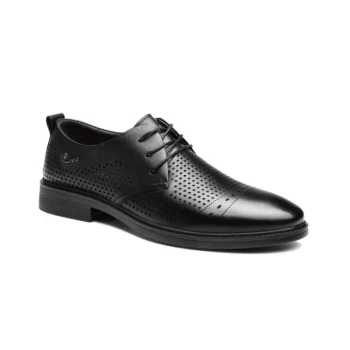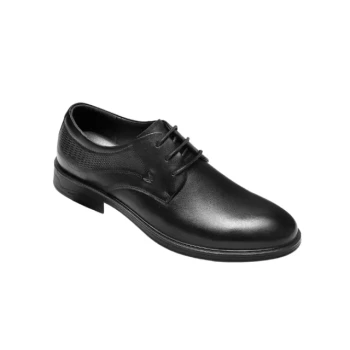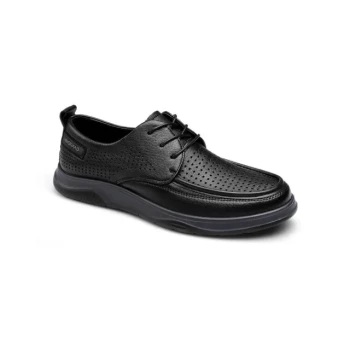At its core, a Goodyear welt shoe is more expensive because its construction is a complex, labor-intensive process that requires skilled artisans and higher-quality materials. This method builds a shoe that is not disposable, but designed to be repaired and rebuilt for decades of use.
The high price of a Goodyear welt shoe reflects an investment in its fundamental architecture. You are paying for a specific construction method that makes the shoe exceptionally durable and, most importantly, allows the sole to be replaced multiple times, drastically extending its life.

Deconstructing the Cost: A Look at Construction
The price tag is a direct result of how the shoe is assembled. Unlike cheaper methods where the sole is simply glued on, the Goodyear welt process is a more involved and robust technique.
The Role of Skilled Labor
Goodyear welting cannot be fully automated. It demands the precision and expertise of skilled craftspeople to properly stitch the components together, a process that is both time-consuming and costly.
The Goodyear Welt Itself
The key component is the welt: a strip of leather that is sewn around the bottom edge of the shoe's upper. This welt then acts as a durable intermediary to which the outsole is stitched.
A Foundation of Quality Materials
This superior construction method is almost always paired with high-quality materials, such as premium leathers for the upper and durable components for the sole and insole, which further contributes to the overall cost.
The True Value Proposition: Longevity and Repairability
The reason this construction method has endured is its unparalleled advantage in extending the life of the footwear. The cost is justified not by fashion, but by function.
Designed for Resoling
The welt creates a buffer between the insole and the outsole. When the sole wears out, a cobbler can simply cut the stitches holding it to the welt and attach a new one without ever disturbing the structure of the shoe's upper.
An Economic Advantage Over Time
Cheaper, cemented shoes have their soles glued directly to the upper. When the sole wears out, the shoe is typically ruined and must be discarded. The Goodyear welt turns the sole into a replaceable part, preventing the entire shoe from becoming disposable.
A Lifespan Measured in Decades
Because the upper remains intact during resoling, a well-cared-for pair of Goodyear welted shoes can last for decades. They become a long-term fixture in a wardrobe rather than a temporary item.
Understanding the Trade-offs
While the benefits are significant, it's crucial to acknowledge the practical considerations that come with this investment.
The High Upfront Cost
The initial price is the most obvious barrier. It requires a willingness to invest significantly more than you would for a standard pair of shoes.
The Cost of Maintenance
Resoling is the key benefit, but it is not free. A local cobbler might charge around $100, while sending the shoes back to the original manufacturer for a factory-quality rebuild can cost up to $400.
An Investment in Durability
These shoes are built for structure and durability. This means they are often heavier and may require a break-in period to conform to your foot, unlike more flexible, cemented footwear.
Making the Right Choice for Your Goal
Ultimately, whether a Goodyear welt shoe is "worth it" depends entirely on your priorities and how you view footwear.
- If your primary focus is long-term value and sustainability: The ability to resole a Goodyear welted shoe makes it an outstanding investment that reduces waste and can be more economical over its lifespan.
- If your primary focus is low initial cost for occasional use: A less expensive construction method is likely a more practical and budget-friendly choice.
Understanding this construction method empowers you to see the price not as an expense, but as a deliberate investment in craftsmanship and longevity.
Summary Table:
| Key Factor | Impact on Cost & Value |
|---|---|
| Construction Method | Complex, labor-intensive Goodyear welting process. |
| Skilled Labor | Requires artisan craftsmanship, not full automation. |
| Material Quality | Uses premium leathers and durable components. |
| Longevity | Designed to be resoled, lasting for decades. |
| Resoling Cost | Initial investment offsets long-term replacement costs. |
Ready to Invest in Superior Footwear?
As a large-scale manufacturer, 3515 produces a comprehensive range of durable footwear for distributors, brand owners, and bulk clients. Our production capabilities encompass all types of shoes and boots, including those built with long-lasting construction methods.
Partner with us to provide your customers with quality that stands the test of time.
Contact our team today to discuss your manufacturing needs and how we can add value to your product line.
Visual Guide

Related Products
- Wholesale Comfortable Business Casual Shoes Custom Manufacturing
- Custom Manufactured Air Cushion Leather Business Shoes for Wholesale
- Durable Rubber-Soled Utility Shoes for Wholesale & Custom Brand Manufacturing
- Factory Direct Wholesale Leather Comfort Shoes with Dial Closure
- Wholesale Breathable Training Shoes Custom Athletic Footwear Manufacturer
People Also Ask
- Are brown dress shoes appropriate for formal events? A Guide to Choosing the Right Shoe
- What are the key considerations when choosing dress shoes for formal occasions? A Guide to Style, Color & Quality
- Is it acceptable to wear dress shoes with casual outfits? Elevate Your Smart Casual Office Style
- What are the long-term benefits of investing in quality dress shoes? Save Money & Boost Your Style
- How can one balance a casual outfit when wearing dress shoes? Achieve a Polished Smart Casual Look



















